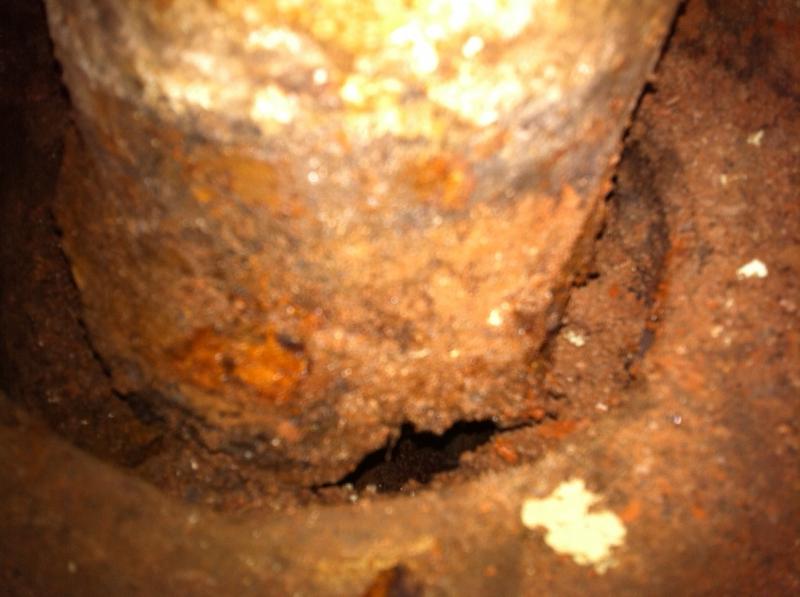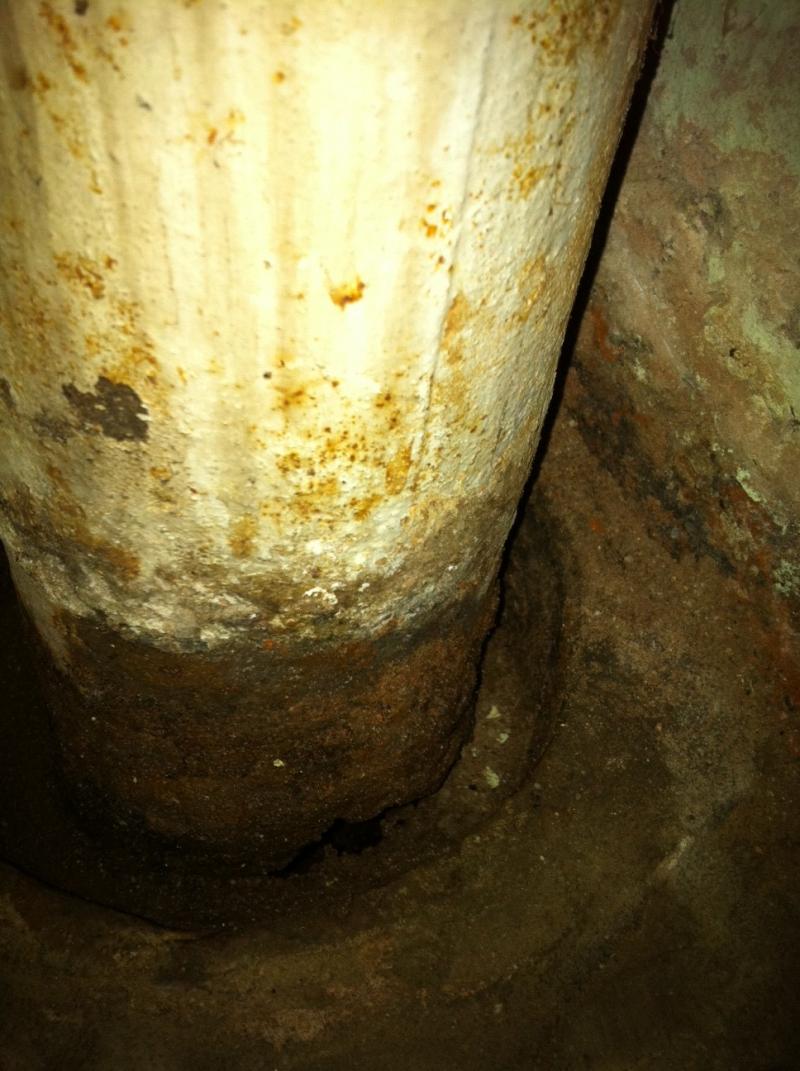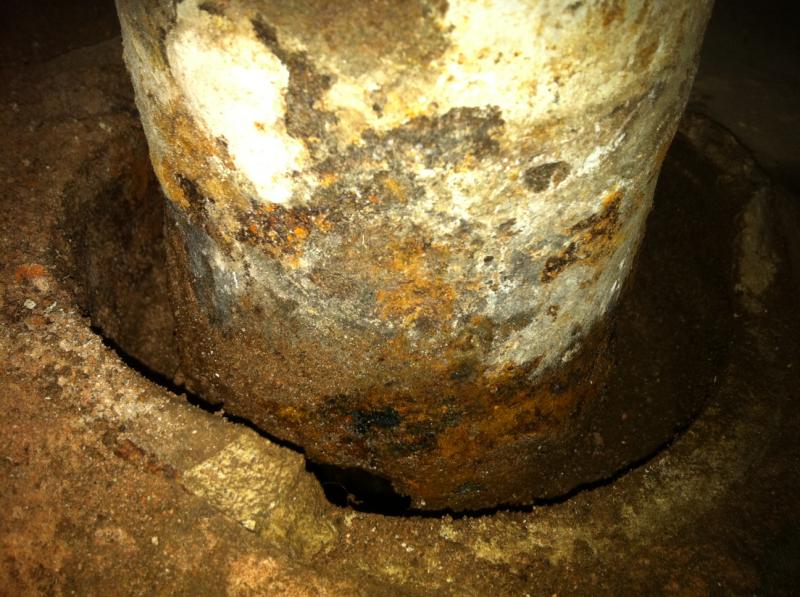Hi,
I have recently bought a c.1900 house which I am quickly finding out is being held up by the paint and wallpaper it came with.
The survey (as you might expect!) highlighted numerous instances of damp in the property, and my first job is to tackle the sources of the damp.
In doing so, I noticed a damp patch around the base of the cast iron soil stack and picked away at the concrete surround (which duly fell away) to reveal 2 rusty holes in the stack on opposite sides. The stack goes into a cylindrical (clay?) pot which is much larger than the pipe. The pipe sits above a pipe / hole of the same diameter. Now all the loose concrete has been removed, if kick the stack, it will kind of vibrate, suggesting it’s hovering above the clay pot.
The clay pot(?) goes down about by 4cm from the floor. The holes in the pipe are about 2cm below floor level.
My questions on this are:
1) Should the stack be hovering above the clay fitting or has it corroded completely, freeing itself in the process?
2) Should I try to repair or just replace with plastic?
3) If I repair, how would I do this? ( I have heard of people replacing upper sections with plastic, but not lower sections?).
Thanks in advance all!
I have recently bought a c.1900 house which I am quickly finding out is being held up by the paint and wallpaper it came with.
The survey (as you might expect!) highlighted numerous instances of damp in the property, and my first job is to tackle the sources of the damp.
In doing so, I noticed a damp patch around the base of the cast iron soil stack and picked away at the concrete surround (which duly fell away) to reveal 2 rusty holes in the stack on opposite sides. The stack goes into a cylindrical (clay?) pot which is much larger than the pipe. The pipe sits above a pipe / hole of the same diameter. Now all the loose concrete has been removed, if kick the stack, it will kind of vibrate, suggesting it’s hovering above the clay pot.
The clay pot(?) goes down about by 4cm from the floor. The holes in the pipe are about 2cm below floor level.
My questions on this are:
1) Should the stack be hovering above the clay fitting or has it corroded completely, freeing itself in the process?
2) Should I try to repair or just replace with plastic?
3) If I repair, how would I do this? ( I have heard of people replacing upper sections with plastic, but not lower sections?).
Thanks in advance all!




